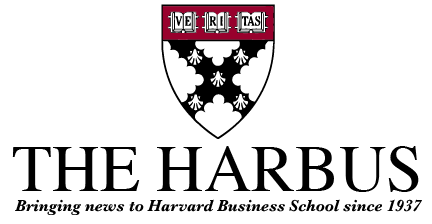Here at HBS, most of us know our professors from the classroom.
However, they lead a double life, teaching case studies by day while solving the world’s problems under the cloak of night. Actually, this isn’t much of an exaggeration. Groundbreaking discoveries are common at Harvard Business School. Although students may not hear about them, these discoveries change how we work and live. This is the first of several columns highlighting some of these contributions. (If people know of exciting discoveries here at the School it would be appreciated if they would e-mail cwinkler@hbs.edu.)
By now most of us are familiar with the $1.5 billion settlement reached between the SEC and 10 Wall Street Investment banks to prevent the kind of biased research that touted stocks during the Internet bubble that analysts privately derided in internal e-mails. The culprit, we learned, was the analysts’ dual role as investment banking rainmakers who rated the very companies they were wooing.
No doubt the government had good intentions in quickly punishing the guilty and altering the rules to eliminate the conflict of interest. Problem solved. However, two HBS professors and one determined DBA candidate weren’t so sure. Approximately 18 months ago, Paul Healy, Boris Groysberg and graduate student Amanda Cowen began asking some tough questions that resulted in a paper demonstrating that Eliot Spitzer and the SEC may have jumped too quickly to their conclusions.
Oh, the investment banking analysts were biased all right, there is no doubt about that. But the HBS analysis of 4,505 analysts earnings projections for 5,006 companies during the period January 1998 to December 2000 found that analysts from brokerage firms were even more optimistic (biased) than their counterparts at investment banks. It did not appear to make a difference whether the brokerage firms sold their research to institutions or retail investors. The team also discovered that stock ratings become more optimistic the longer the analyst covered the stock.
Healy, Groysberg and Cowen examined how brokerage analysts are compensated to try to determine how they might be biased. Groysberg was able to conduct hundreds of interviews from which he culled the desired information.
“The [brokerage] analyst’s existence hinges on whether the client will trade,” explained Groysberg, an Assistant Professor in Organizational Behavior. The institutions that purchase the research specify when they trade which research was most helpful in making the decision, Groysberg said. These comments are then used by the brokerage firm to calculate analyst compensation. On the retail side, investors pay a broker’s fee when purchasing a stock and the brokerage analyst is compensated as a result of that transaction.
When the forecasts were compared, the type of firm turned out to be the most powerful determinant of analyst optimism, with brokerage firms providing the most optimistic reports.
“To be honest, the results we found surprised even us,” said Cowen. “We thought the findings would support Spitzer’s [conclusions].”
This poses a dilemma for the prosecutors. Part of the settlement requires the 10 firms to pay for “independent research” that they must distribute along with their own. Unfortunately, Spitzer’s definition of an “independent” research firm is one that doesn’t perform investment banking functions, leaving many brokerage firms such as Standard & Poors and Brown Brothers & Harriman classified as “independent.” In other words, the implementation of Spitzer’s solution results in research that is even more biased being distributed with the investment banks’ reports, meaning that the regulators’ “solution” actually makes the
problem worse!
Healy, who also heads Harvard Business School’s Doctoral program, refers to this as “the law of unintended consequences”. He and Professor Krishna Palepu published an article in the Harvard Business Review in July 2003 titled, “How the Quest for Efficiency Corroded the Market” that uses the law and their own framework to analyze the deterioration of the various market institutions that lead to the accounting scandals that continue to disrupt the stock markets.
One of the unusual aspects in how the paper came together was the diversified expertise of each of the three authors.
“Paul is one of the best intellectual dissertation thinkers of our time,” said Groysberg. “He has had a big influence on me.” Healy had been pondering these questions for a while, and had performed extensive research in the past analyzing Wall Street research trends.
“One of the significant strengths of the paper stems from the many different tests performed on the data to make sure that the findings were robust,” said Groysberg. That was Cowen’s department.
“It is really a learning process as you go along,” said Cowen, who performed the computer analyses. “Whenever you work with a large dataset there are always problems. You can run regressions, but the large part was understanding [the data]….It was an iterative process for us that [was marked by] creative bursts – that final ‘ah-hah!’ That’s a cool thing when that happens,” concluded Cowan.
Groysberg says that Cowen embodies “an unusual combination of a truly amazing practical orientation and academic intellectual curiosity.” She is currently enrolled in the University’s Doctoral Business Administration program in Policy and Management. Her thesis will expand and further develop the findings in the paper.
The group’s findings have been cited in Fortune Magazine and The Boston Globe.
To download a copy of “Which Types Of Analyst Firms Make More Optimistic Forecasts?” free of charge, go to the Social Science Research Network Electronic Paper Collection at //ssrn.com/abstract=436686.

